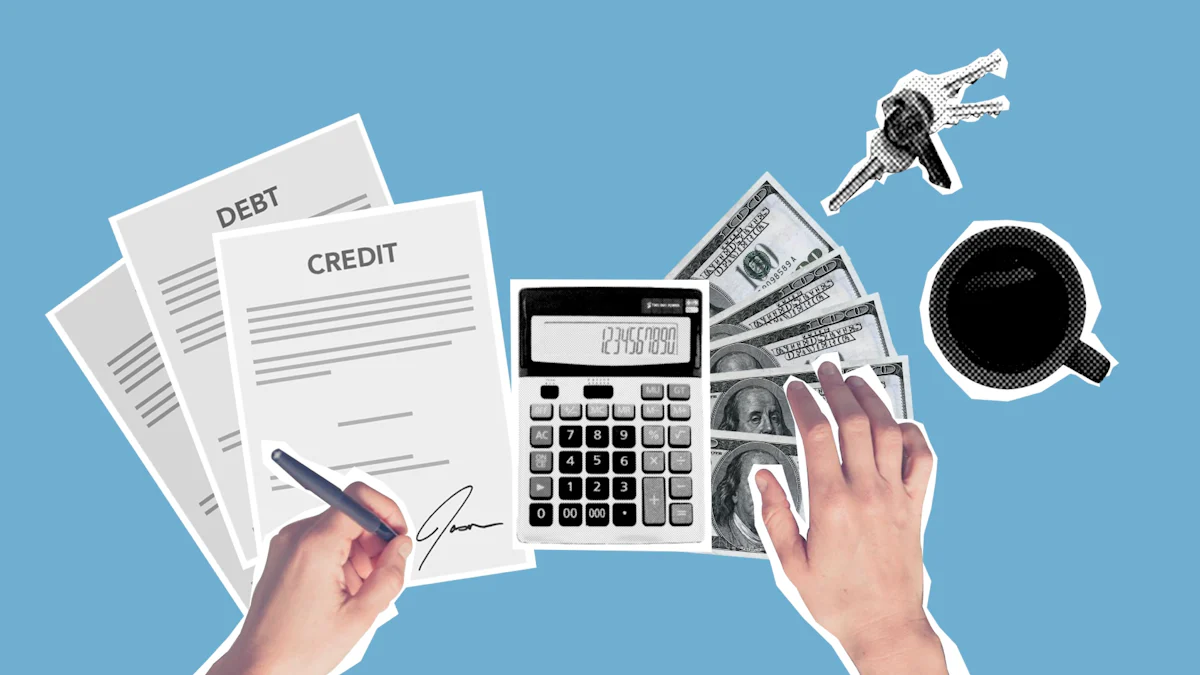Master the Art of Calculating Mortgage Payments with Taxes

Master the Art of Calculating Mortgage Payments with Taxes
Image Source: pexels
When I began learning about owning a home, I realized that mortgage payments were more than just numbers. They encompass various costs that impact financial stability. Understanding the main loan amount helped me see how payments reduce debt. Additionally, learning about taxes and insurance was crucial in helping me plan my budget. Knowing how to calculate mortgage payments with taxes and insurance gave me the confidence to plan wisely.
Key Takeaways
-
To understand mortgage payments, know the loan amount, interest, taxes, and insurance. This helps you plan your money better.
-
A mortgage calculator makes math easier. Add correct loan details, taxes, and insurance for exact answers.
- Check if your monthly payment fits your budget. Change plans if needed, like picking a smaller house or a longer loan to pay less each month.
Breaking Down Mortgage Payment Components

Image Source: pexels
Principal and Interest
When I learned about mortgages, I found two key parts: principal and interest. The principal is the money I borrowed. The interest is the fee for borrowing it. At first, most of my payment went to interest. Later, more of it started reducing the principal. This change happens because of an amortization schedule. It slowly shifts payments toward the principal. Knowing this helped me understand how my debt got smaller.
Property Taxes
Property taxes were another big part to consider. These taxes depend on where I live. For example, New Jersey and Illinois have higher tax rates. Hawaii and Alabama have much lower rates. Here’s a quick look at some state tax rates:
| State | Effective Tax Rate (%) |
|---|---|
| New Jersey | 2.08 |
| Illinois | 1.95 |
| Hawaii | 0.26 |
| Alabama | 0.36 |
Cities often have higher taxes than rural areas. Learning this helped me plan for location-based costs.
Homeowners Insurance
Homeowners insurance protects my house and belongings. The cost depends on many things. Living in areas with wildfires or hurricanes raises premiums. Bigger homes or older ones also cost more to insure. Choosing a higher deductible lowers premiums but increases out-of-pocket costs. I learned to balance coverage and cost to find the best policy.
Additional Costs (e.g., HOA fees, PMI)
Other costs like HOA fees and PMI also mattered. Without a 20% down payment, I needed private mortgage insurance (PMI). This added 0.5% to 2% of my loan yearly. Living in a community with an HOA meant monthly fees. These fees averaged $191 per month. Adding these costs helped me see my full monthly payment.
Learning all these parts made calculating mortgage payments easier. It also helped me budget better for my dream home.
How to Calculate Mortgage Payments with Taxes and Insurance
Figuring Out Principal and Interest
When I started learning about mortgages, I found a simple way to calculate principal and interest. Breaking it into steps made it easier to understand. Here’s what I learned:
-
The principal is the loan amount. I got it by subtracting my down payment from the home’s price.
-
To find the monthly interest, I multiplied the loan amount by the interest rate. Then, I divided that number by 12 months.
- The monthly principal was the total mortgage payment minus the interest amount.
This table helped me see it clearly:
| Type of Calculation | Formula |
|---|---|
| Principal | home price – down payment |
| Monthly Interest Payment | (loan amount × interest rate) ÷ 12 months |
| Monthly Principal Payment | total payment – interest payment |
This method showed me how much I needed to pay every month.
Adding Taxes and Insurance
After figuring out principal and interest, I added property taxes and insurance to find my full payment. My lender estimated these costs and included them in my monthly bill. This way, I didn’t have to pay them separately. For example, if my yearly property taxes were $3,600, I divided that by 12 to get $300 per month. I did the same for my insurance cost. Adding these to my principal and interest gave me my total monthly payment.
Examples for Different Home Prices
To understand better, I looked at examples for homes costing $200,000, $400,000, and $600,000. Here’s what I found:
| Home Price | Monthly Payment |
|---|---|
| $200,000 | $1,000 |
| $400,000 | $2,090 |
| $600,000 | N/A |
These examples showed how home prices changed my payments. Knowing this helped me plan for my future home.
Learning to calculate mortgage payments with taxes and insurance made me confident. It helped me know what to expect and budget better.
Tips for Using Mortgage Calculators Effectively
Entering Correct Loan Information
When I first tried a mortgage calculator, I saw how important it was to enter correct details. I collected key information like the loan amount, interest rate, loan term, and down payment. Adding property taxes and insurance made my results more accurate. Trying different loan options showed me how small changes, like a lower interest rate, could save money. Checking current rates also helped a lot. When I was unsure, I asked experts for help. This made me feel confident about my calculations.
Including Taxes, Insurance, and Extra Costs
I found that good mortgage calculators include more than just principal and interest. They also account for taxes, insurance, and HOA fees. This helped me see the real cost of owning a home. For example, one calculator split my monthly payment into sections. It showed how much went to principal, interest, taxes, and insurance. This made budgeting simpler. Here are features I liked in a calculator:
| Feature Description | Why It’s Helpful |
|---|---|
| Includes extra costs (insurance, taxes, HOA fees) | Shows true affordability |
| Breaks down monthly payments | Explains where money goes |
| Matches payments to income and debts | Helps decide borrowing limits |
| Reverse calculates from a set monthly payment | Makes budgeting easier |
| Tracks principal and interest progress | Helps with financial planning |
These tools gave me a clear view of my financial responsibilities.
Understanding Results and Adjusting Your Budget
After using the calculator, I reviewed the results carefully. I compared the monthly payment to my budget to check if it fit. If it seemed too high, I made changes. For example, I thought about buying a smaller house or choosing a longer loan term to lower payments. The calculator also showed how much of my payment built equity. This encouraged me to stick to my financial goals. Learning to calculate mortgage payments with taxes and insurance helped me make smarter choices.
Figuring out mortgage payments with taxes and insurance changed my view of owning a home. Splitting the costs into parts made things clearer. Tools like online calculators, such as NerdWallet, made it simple. They helped me see how payments lower debt over time. Learning these steps gave me confidence to plan and manage my money better.
🏡 Using helpful tools and learning more can make buying a home easier and help you reach your dream of owning one.
FAQ
How can I estimate property taxes for my mortgage?
I used online tools and checked local tax rates. My lender also gave me estimates based on the home’s area. 🏡
Is there a way to avoid private mortgage insurance (PMI)?
Yes! I skipped PMI by saving a 20% down payment. If that’s hard, refinancing later can remove PMI after building equity.
What’s the best way to pick homeowners insurance?
I compared plans from different companies. I chose coverage that fit my needs and budget. Picking a higher deductible lowered my monthly cost. 💡